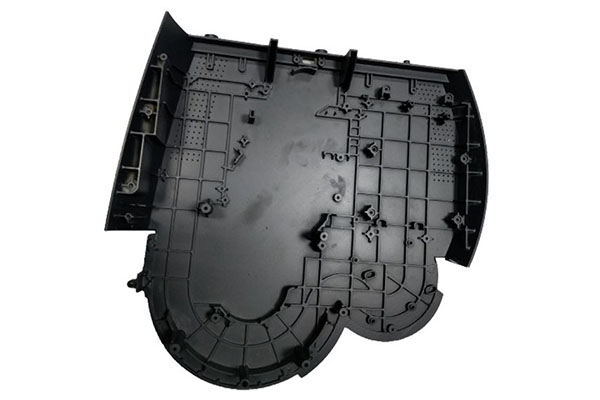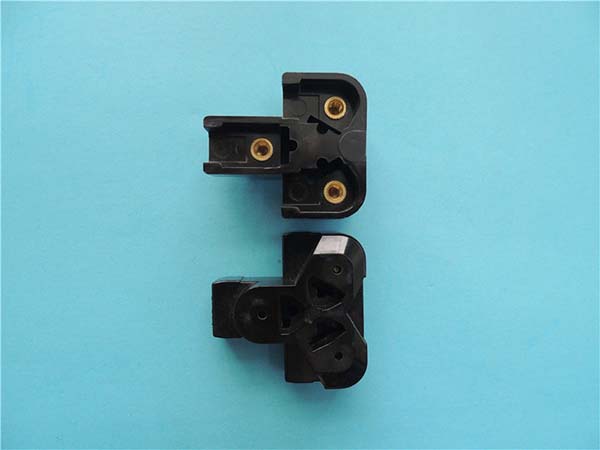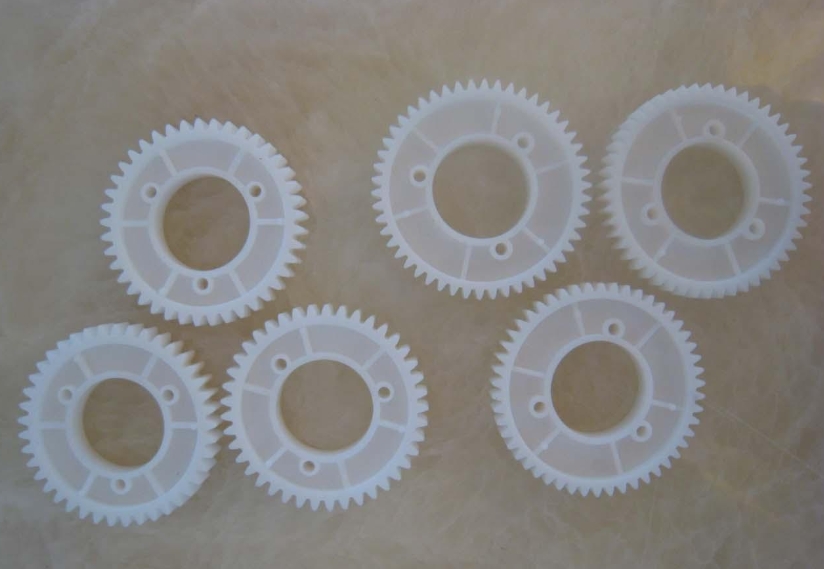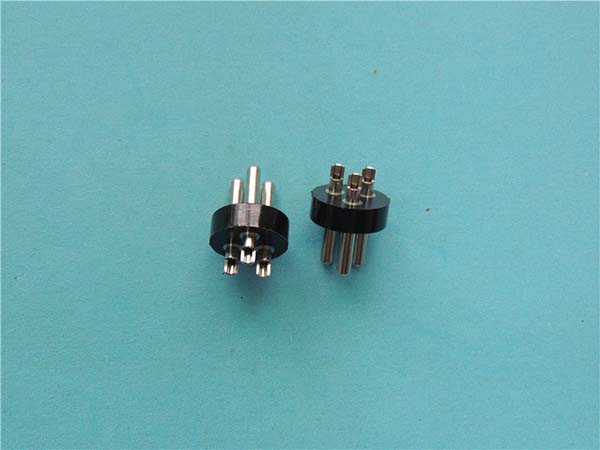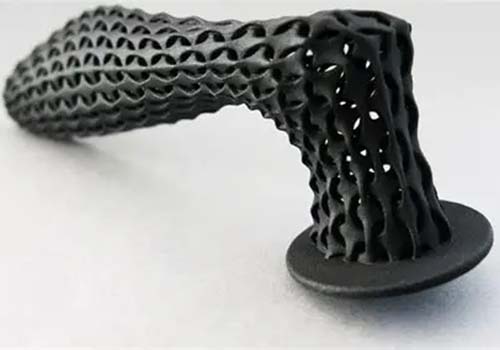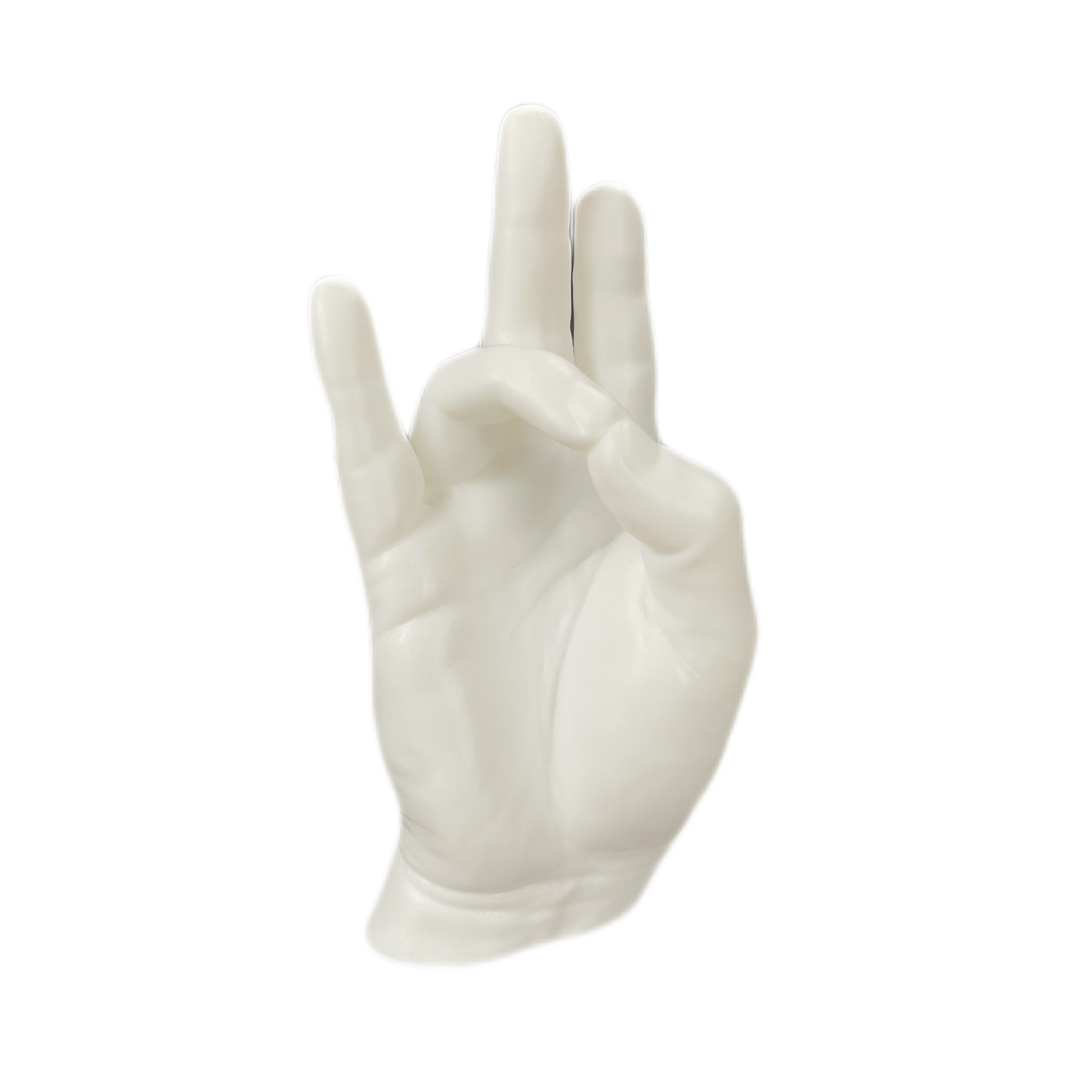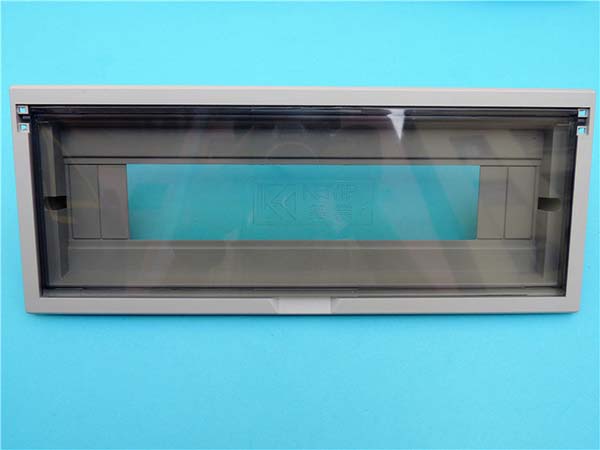1. Introduction
In the dynamic landscape of modern manufacturing, industrial 3D printing has emerged as a transformative force, reshaping the factory floor in profound ways. This technology, also known as additive manufacturing, has transcended its initial role as a prototyping tool and is now deeply integrated into various stages of production processes across multiple industries.
For instance, in the aerospace industry, where lightweight yet strong components are crucial, 3D printing allows for the production of parts with intricate internal structures that reduce weight without sacrificing strength. In the automotive sector, it enables rapid prototyping and the production of customized parts, leading to shorter development cycles and enhanced product differentiation. These are just a few examples of how 3D printing is revolutionizing manufacturing at the factory level. As Yigu Technology delve deeper into this article, we will explore in detail how the leading industrial 3D printing companies are making these changes possible.
2. Understanding Industrial 3D Printing
2.1 Basic Concepts
Industrial 3D printing, also known as additive manufacturing, is a revolutionary manufacturing process that builds three - dimensional objects by layering materials based on a digital model. Unlike traditional 2D printing, which produces flat images or text on a two - dimensional surface such as paper using ink or toner, 3D printing creates physical, volumetric objects.
The most fundamental difference lies in the dimension of the output. 2D printing is restricted to the X and Y axes, resulting in planar prints. In contrast, 3D printing operates in three dimensions (X, Y, and Z), enabling the creation of complex geometries that can have internal structures, overhangs, and intricate details. For Yigu Technology example, a 2D printer can print a picture of a car part, while a 3D printer can produce the actual physical car part.
Another key difference is in the materials used. 2D printing typically uses inks, toners, or dyes on paper or other flat substrates. Industrial 3D printing, on the other hand, employs a wide range of materials including plastics, metals, ceramics, composites, and even biological materials. These materials are deposited layer by layer to form the final 3D object, allowing for the creation of functional parts with specific mechanical, thermal, and chemical properties.
2.2 Working Principles
The working principle of 3D printing can be broken down into four main steps:
- Modeling: The first step is to create a 3D model of the object to be printed. This can be done using computer - aided design (CAD) software, 3D scanning technology, or by modifying existing 3D models from online libraries. The 3D model serves as the digital blueprint for the entire 3D printing process, containing all the geometric information about the object, such as its shape, size, and internal structure. For instance, in the aerospace industry, engineers use CAD software to design lightweight yet strong turbine blades with complex internal cooling channels, which are then prepared for 3D printing.
- Slicing: Once the 3D model is created, it needs to be sliced into thin layers. Specialized slicing software analyzes the 3D model and divides it into a series of cross - sectional layers, typically ranging from a few micrometers to a few millimeters in thickness. Each layer is essentially a 2D representation of the 3D object at a particular height. The slicing software also generates a set of instructions, known as G - code, which tells the 3D printer how to move, where to deposit the material, and other parameters such as printing speed and temperature.
- Physical Conversion: This is the actual printing stage. The 3D printer reads the G - code instructions and starts depositing the material layer by layer according to the sliced 2D patterns. Different 3D printing technologies use various methods to deposit the material. For Yigu Technology example, in fused deposition modeling (FDM), a heated nozzle extrudes a melted thermoplastic filament, which solidifies as it cools, forming each layer. In selective laser sintering (SLS), a high - power laser sinters powdered materials together to create each layer. As each layer is completed, the build platform either lowers (in some printers) or the print head moves up, and the next layer is deposited on top of the previous one until the entire 3D object is formed.
- Post - processing: After the 3D printing is complete, the printed object usually requires some post - processing steps to achieve the desired final properties. This can include removing support structures (if any were used during printing to support overhanging parts), sanding, polishing, heat - treating, coating, or infiltrating the object with other materials. For example, a 3D - printed metal part may be heat - treated to improve its mechanical strength, and a plastic part may be polished to achieve a smooth surface finish.
2.3 Key Technologies
There are several key 3D printing technologies currently in use in industrial settings, each with its own set of advantages and limitations:
| Technology | Full Name | Principle | Advantages | Disadvantages |
| FDM | Fused Deposition Modeling | Melts a thermoplastic filament and extrudes it layer by layer through a nozzle | - Low cost, both in terms of equipment and materials, making it accessible for small businesses and hobbyists. - Simple operation and maintenance, suitable for beginners. - Wide range of available thermoplastic materials such as PLA, ABS, PETG, etc., allowing for different applications. - Can use water - soluble support materials, which are easy to remove for complex geometries. | - Relatively low printing speed, especially for large objects. - Lower dimensional accuracy compared to some other technologies, with typical accuracy in the range of 0.1 - 0.4 mm. - The surface finish is often rough, with visible layer lines, which may require additional post - processing for applications where high surface quality is crucial. - Limited to thermoplastic materials, not suitable for high - temperature or high - strength metal applications without additional steps. |
| SLA | Stereolithography | Uses a laser to cure a photosensitive resin layer by layer in a liquid resin bath | - High precision, capable of achieving accuracies as low as ±0.05 - 0.1 mm, making it suitable for applications that require fine details such as jewelry making, dental applications, and intricate prototypes. - Produces smooth surface finishes, reducing the need for extensive post - processing in many cases. - Can create complex geometries with high resolution due to the precise control of the laser beam. | - High - cost equipment and materials, which can be a barrier to entry for some users. - The liquid resin is often toxic and requires proper handling and storage. - Limited material options compared to FDM, mainly restricted to photosensitive resins. - Printed parts may be brittle and have limited mechanical strength in some cases, depending on the resin used. |
| 3DP | 3D Printing (also known as Binder Jetting) | Sprays a binder onto a bed of powder material (such as metal, ceramic, or sand) layer by layer to form the object | - Can work with a wide variety of powder materials, including metals, ceramics, and sand, enabling applications in metal casting, architectural models, and ceramic art. - High - speed printing, especially for large - scale objects, as it can deposit a large amount of material in a relatively short time. - Allows for multi - material printing, where different binders or powder materials can be used to create objects with varying properties within a single part. | - The printed parts often have a porous structure, which may require additional infiltration or sintering steps to improve strength and density. - Lower dimensional accuracy compared to SLA, typically in the range of 0.1 - 0.3 mm. - The binder material may need to be carefully removed or cured, adding complexity to the post - processing steps. - Powder handling can be messy and may require special ventilation systems to prevent dust inhalation. |
| SLS | Selective Laser Sintering | Uses a laser to sinter powdered materials (such as nylon, polyamide, or metal powders) together layer by layer | - Can directly produce functional parts with high strength and durability, especially when using metal powders, making it suitable for applications in the automotive, aerospace, and tooling industries. - Does not require support structures for most geometries since the unsintered powder supports the overhanging parts during printing. - Allows for the use of a wide range of powder materials, expanding the possibilities for different applications. | - High - cost equipment and materials, similar to SLA. - The sintering process can be time - consuming, especially for large parts. - The surface finish of the printed parts is often rough, and post - processing such as sandblasting or machining may be required to achieve the desired surface quality. - The printing process may produce harmful fumes, especially when using certain materials, requiring proper ventilation systems. |
4. Top Industrial 3D Printing Companies
4.1 Stratasys
Stratasys has been a pioneer in the 3D printing industry since its establishment in 1989. The company has made significant contributions to the development and widespread adoption of 3D printing technology.
One of Stratasys' key strengths lies in its advanced 3D printers. For example, the Stratasys F900 3D printer is an industrial - grade workhorse. It offers a large build volume, allowing for the production of large - scale parts. With a build volume of 914 x 610 x 914 mm, it can accommodate parts that are much larger than what many other desktop or even some mid - range industrial 3D printers can handle. This makes it ideal for applications in industries such as aerospace, automotive, and large - scale prototyping.
In addition to its large build volume, the F900 also provides high - quality prints with excellent dimensional accuracy. It can achieve an accuracy of ±0.127 mm, ensuring that the printed parts meet the stringent requirements of industrial applications. This level of accuracy is crucial, especially in industries where even the slightest deviation can have significant consequences, such as in the manufacturing of aircraft components.
Stratasys also boasts an extensive and diverse material library. The company offers a wide range of materials, including engineering thermoplastics, elastomers, and even materials with specialized properties. For instance, the ULTEM 9085 resin is a high - performance material that is widely used in the aerospace industry. It has excellent mechanical properties, such as high strength and stiffness, as well as good chemical resistance and flame retardancy. These properties make it suitable for manufacturing aircraft interior components, where weight reduction, strength, and fire safety are of utmost importance.
Another notable material is the Antero 800NA, a PEKK - based FDM thermoplastic. It has outstanding chemical resistance, low outgassing properties, and high heat resistance, making it an excellent choice for applications in the aerospace and automotive industries, particularly for parts that need to withstand harsh environments.
The applications of Stratasys' 3D printing technology in the aerospace industry are numerous. GKN Aerospace, a global engineering company, utilized the Stratasys F900 3D printer to shorten production times and develop new tooling applications. By using 3D printing, GKN Aerospace was able to quickly produce custom - designed tools, reducing the lead time from weeks to days. This not only improved the company's production efficiency but also allowed for more flexibility in tool design, enabling them to better meet the specific needs of different manufacturing processes.
4.2 HP
HP entered the 3D printing market with a bang, introducing innovative technologies that have made a significant impact. One of its flagship technologies is the Multi Jet Fusion (MJF) technology, which has several distinct advantages.
The MJF technology is based on a powder - bed fusion process. It uses a printhead to deposit a fusing agent and a detailing agent onto a bed of powder material, layer by layer. The fusing agent is selectively applied to areas where the powder needs to be fused together, while the detailing agent helps to control the surface finish and accuracy of the printed part.
One of the key advantages of MJF is its high speed. Compared to some traditional 3D printing technologies, MJF can print parts much faster. For example, in a production - scale environment, an HP Jet Fusion 3D printer using MJF technology can produce multiple parts simultaneously, with a build rate that is often several times faster than other powder - bed fusion printers. This high - speed printing capability makes it suitable for mass production of parts, reducing the overall production time and cost.
Another advantage of MJF is its ability to achieve excellent part quality. The technology offers high dimensional accuracy, with the ability to produce parts with tolerances as low as ±0.1 mm in some cases. The surface finish of MJF - printed parts is also relatively smooth, reducing the need for extensive post - processing in many applications. This is particularly important for industries where the appearance and fit - and - finish of parts are critical, such as consumer products and medical devices.
8. Conclusion
Yigu Technology Industrial 3D printing companies have undeniably become the vanguards of transformation on the factory floor. Their influence is felt across multiple industries, from aerospace to automotive, from healthcare to consumer goods. These companies are not only revolutionizing the way products are designed and manufactured but are also redefining the very concept of production efficiency, customization, and supply chain management.
The technologies and solutions offered by top industrial 3D printing companies have enabled the creation of complex geometries, the production of high - performance parts, and the realization of on - demand manufacturing. They have significantly reduced production lead times, minimized material waste, and enhanced product quality. Moreover, through strategic partnerships and continuous innovation, these companies have been able to address the specific challenges of different industries, making 3D printing an integral part of the manufacturing ecosystem.
FAQs
1. What is the most suitable 3D printing technology for high - volume production?
For high - volume production, technologies like HP's Multi Jet Fusion (MJF) are often more suitable. MJF offers high - speed printing, which can produce multiple parts simultaneously. It also has good part quality and dimensional accuracy, making it a viable option for mass - producing parts in industries such as consumer products and automotive manufacturing.
2. How do industrial 3D printing companies ensure the quality of 3D - printed parts?
Industrial 3D printing companies ensure part quality through various means. They use high - precision printers with advanced control systems to maintain consistent printing parameters. Quality control also involves post - processing steps such as heat - treating, sanding, and polishing. Additionally, many companies employ non - destructive testing methods like X - ray inspection to detect internal defects in printed parts.
3. Can industrial 3D printing be used for large - scale construction projects?
Yes, 3D printing is being explored for large - scale construction projects. Some companies are developing large - format 3D printers that can print building components or even entire structures. 3D printing in construction can reduce material waste, speed up the construction process, and enable the creation of unique architectural designs. However, challenges such as ensuring structural integrity and complying with building regulations still need to be fully addressed.
